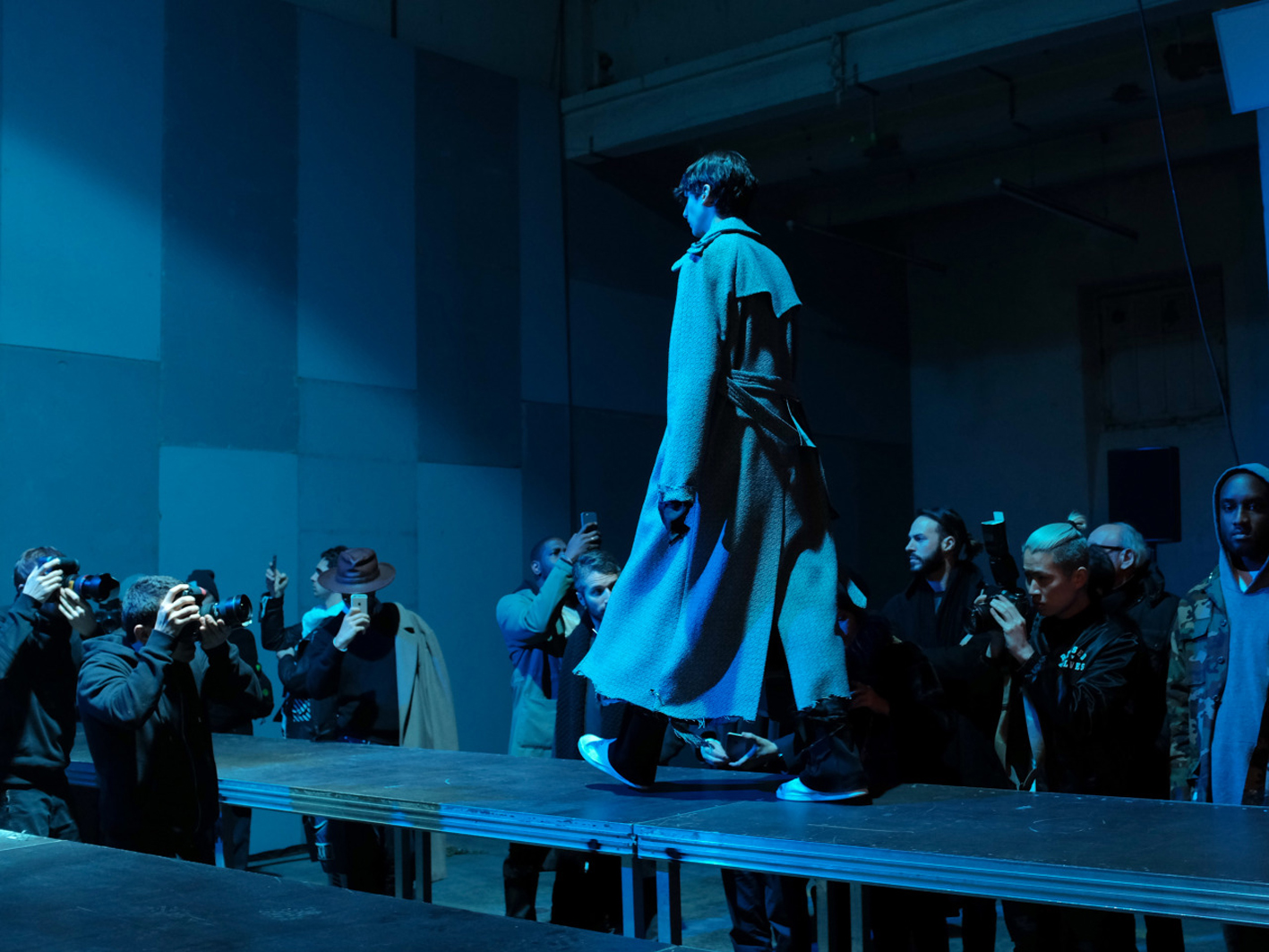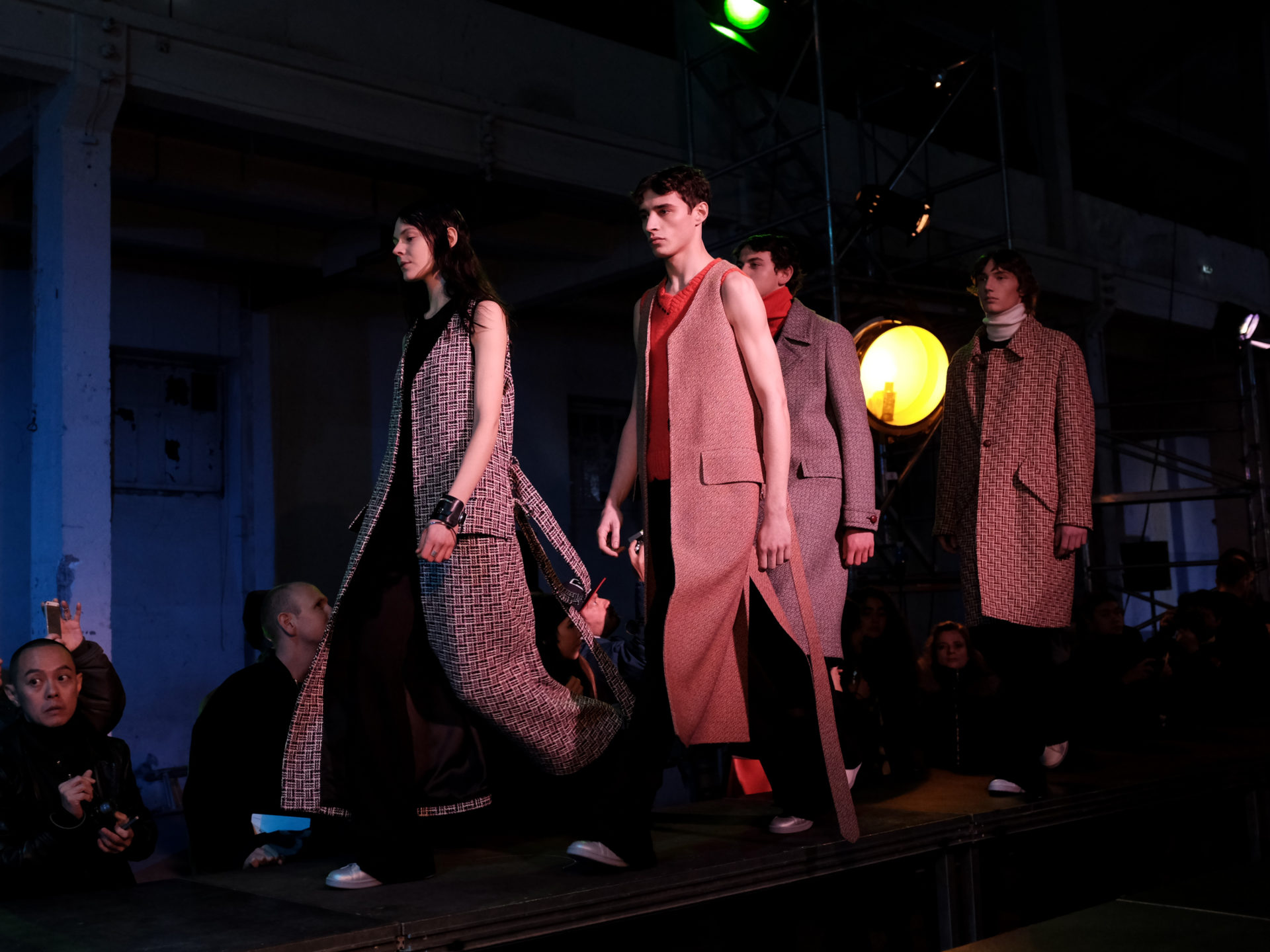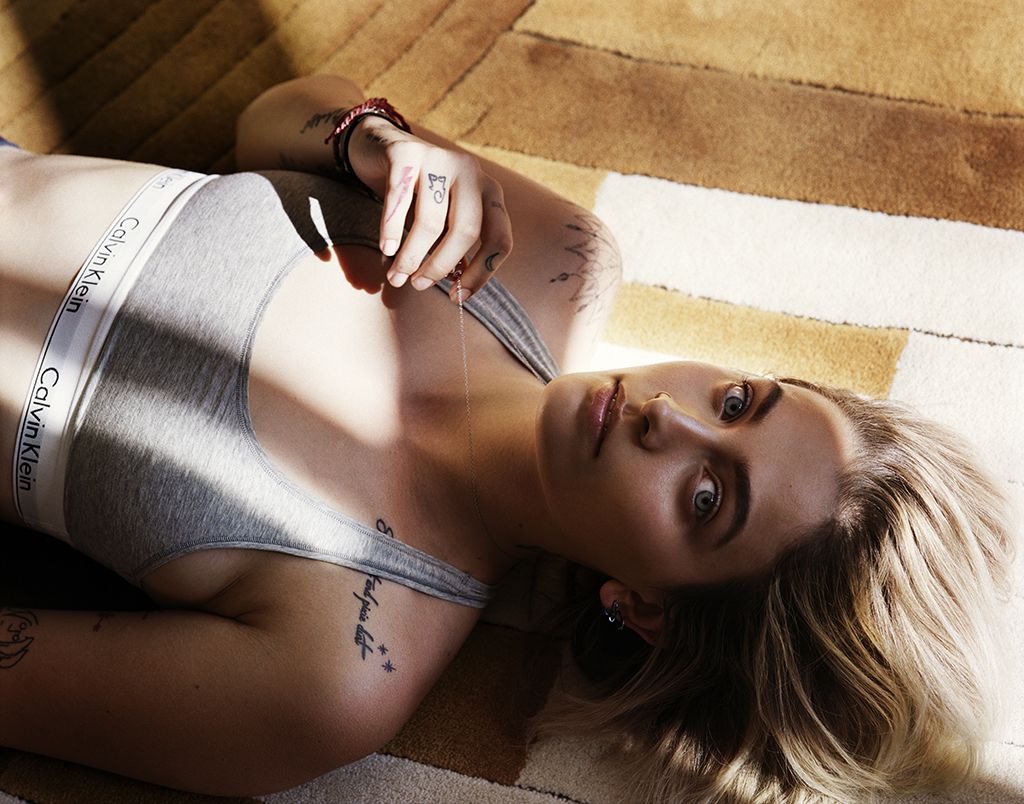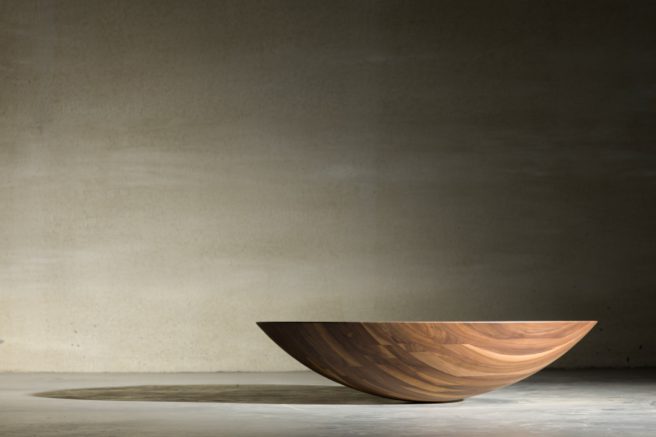Wanderful Loves
Raf Simons was born in Neerpelt, in 1968. His father worked on the military basis of Kleine Brogel as a night porter, and his mother occasionally cleaned houses. In interviews, Simons has often stressed the cultural paucity of the Limburg of his youth, a provincial backwater void of contemporary art museums, arthouse cinemas or inspirational boutiques, far removed from the fashionable bustle of Antwerp and Brussels, not to mention Paris or London. He studied industrial design in Genk, thinking that it would be interesting to design products with a purpose.
He graduated in 1991 with ‘Accessoiremeubels’, a series of seven small cupboards that, in the designer’s words, ‘reflect on the relation between the human body and the embodiment of the product.’ In some ways, the work can be considered as his first fashion project — up to the Raf Simons logo, which hasn’t changed much since.
‘I collect everything that I think could be interesting to develop a new product,’ said Simons in the booklet published on the occasion of the school’s graduation exhibit. ‘Ideas, materials, techniques, forms, theories, texts, products, images, videos, films, visions, information, philosophies. I throw together these disparate elements and look for possible combinations to end up with a new product. I start from chaos and end up with order, thanks to the design process. Research and design go together.”
Determined to make it as a furniture designer, Simons travelled to Milan, home of some of the world’s most important design companies, selling his pieces through a gallery, although his work was never picked up by industry leaders like, say, a Cappellini or a Cassina.
His conversion to fashion happened while he was still a student. An intern at Walter Van Beirendonck, the designer, took Simons to a Martin Margiela show in Paris. The all-white Spring Summer 1990 show took place in a children’s playground. Simons felt an immediate connection, a heartfelt emotion—he had found his calling. ‘I walked out of that show’, he said, ‘and I thought, that’s what I’m going to do. Prior to that, I was very much interested in fashion, but I didn’t see it as something I could turn into a career.’
He soon began designing garments himself, and considered joining the Royal Academy of Fine Arts in Antwerp, but Linda Loppa, then head of the fashion department, convinced him to start his own line instead (Loppa also acquired Simons’ graduate work and put it on display in her shop).
‘I couldn’t find stuff I liked in clothing shops,’ Simons told me when I first interviewed him in his office in 1998. ‘I bought clothes at flea markets from time to time, and that was it. The lack of good clothes was the main reason I decided to start designing them myself. And I knew exactly what I wanted to do.’
He started off designing a collection with two female friends. When they eventually dropped out, he decided to focus on menswear, fitting the clothes on himself.
Once again, he found himself in Milan, where Loppa had recommended an agent who also dealt with Helmut Lang’s sales (Lang being a brand Loppa used to sell in her Antwerp store). Although it didn’t get much attention from the press, that first collection was picked up by several Japanese and Belgian shops as well as Barneys, the American department store. The following season, Simons rented a gallery in Paris, and contacted buyers and press by himself. He showed for the first time in January 1997, in a small, rundown space near the Père Lachaise cemetery. ‘I was hiding upstairs, too scared to look.’
Since then, Simons has shown his collections in Paris, with a few exceptions, when he set up camp in abandoned factories in the nearby suburban city of Vitry, and at the Le Bourget Airport branch of the Gagosian gallery. He has been an occasional guest at the Pitti menswear fair in Florence, Italy, and didn’t show at all in 2000, when he shelved his brand for a year, not sure if he still wanted to be involved with the fashion industry.
Initially, his shows fit a mould set a decade or so earlier by Martin Margiela and the Antwerp Six. With their amateur teen models bussed in from Belgium, their locations at once unusual and distant, and their eery soundtracks, they were (and still are) typically dark and enthralling.
Simons made his name with narrowly cut suits and shirts, at first glance designed for schoolboy frames. This in a period when most fashion was still meant for wrestler types, and a size 46 or 48 was unheard of in most shops (for bony young guys like me, Raf Simons was a revelation, and I still own a suit that I bought, in the sale, around 1997).
While still relatively obscure from a mainstream perspective, Simons set out to alter men’s fashion. Along with Hedi Slimane at Yves Saint Laurent and Dior Homme, he set the template for the skinny silhouette that came to define the late nineties and early noughts (although he did plenty oversized looks, as well).
While Slimane remained safely within the bourgeois codes of traditional luxury, Simons set out to embrace reality, and more in particular, underground youth cults. Holland’s hard-core Gabber kids were a notable early influence, and bands from Kraftwerk to the Manic Street Preachers.
‘My inspiration is very diverse,’ he said in 1998. ‘The style of a lot of sixteen year olds these days is just awful. Seeing a group of skaters isn’t that impressive. Those oversized pants aren’t that strong an image compared to punk, goth or new wave. Punks were strict. You had all these codes that you had to master in order to get the look right. These days, you can shop the skate look at H&M or P&C. I find it interesting when a look is a reaction to something, when you can’t find it in high street shops, and when parents disagree with the way their kids are dressing. I just missed punk, but I was into new wave, and what came after it. I liked New Beat. I was never part of that phenomenon, but the music was fine, and the clothes weren’t bad either. New Beat had a clear manifesto. It didn’t happen in the street, but away from the street. In clubs and at parties. It was something you dressed up for. It was powerful, and it didn’t last long. I like it when music and clothes interact. Like AC/DC, that mix of schoolboy and hard rock, or Kraftwerk.’
His obsession with youth styles changed over the years, with Simons becoming enthralled with modern art and the fashion establishment, swooning over Pablo Picasso, Miuccia Prada and Robert Mapplethorpe rather than anonymous teen rebels (Hedi Slimane took the opposite direction, embracing youthful rock ‘n roll). In 2014, Simons developed an entire collection with artist Sterling Ruby (one of many highlights in his career) and for Spring/Summer 2017, he worked with the estate of Robert Mapplethorpe, turning some of the photographer’s legendary pictures into wearable designs.
In 2005, Simons was appointed creative director of the German label Jil Sander, which at the time was owned by Prada and based in Milan. It wasn’t Simons’ first foray into Italian fashion. At the very beginning of his career, he had been approached by Donatella Versace (she had been tipped by stylists Joe McKenna and Carine Roitfeld), although nothing came of that. In 1999, he designed two collections for the now defunct leather specialists Ruffo Research, along with Veronique Branquinho, his partner at the time. And for a while, he partnered with an Italian company for the production and distribution of his own brand. The deal went awry, and the brand almost collapsed at the time.
The Jil Sander job earned him the approval of the fashion establishment, and an opportunity to assert himself as a womenswear designer. His collections were critically acclaimed, and rightly so. Simons had no difficulties making the Jil Sander brand his own, replacing the original designer’s sometimes stern minimalism with a style that was rather more gentle, sometimes almost couture-like. ‘When I started at Jil,’ he confided at the time, ‘I decided that if I wanted to do oranges, I’d do oranges.’
He showed his last collection for Sander on February 25, 2012, and debuted at Dior on July 2 of that year. That couture collection was conceived in a couple of weeks. ‘It was hard, but it was doable,’ he said. ‘The people at Dior are used to working fast. They have to. Dior is not a factory, it’s an intimate place, but you do have everything you need under one roof. You don’t ever have to go out, which is efficient.’ His first months at the house were the subject of a full length documentary, Frédéric Tcheng’s Dior and I.
‘I’m a jumper,’ Simons told me around the time he took over at Dior. We talked by phone while he was being driven from his Antwerp home to the Dior ateliers in Paris (the conversation lasted over two hours and Simons had to hang up when his car was pulled over by the police for speeding). ‘I’m a jumper, and I jump from one thing to another. Helmut Lang, Ann Demeulemeester and Rick Owens are repeaters. They evolve within the boundaries of their own aesthetic. Miuccia Prada, Marc Jacobs and Rei Kawakubo, on the other hand, are jumpers. Their collections are often totally different. I’m like that as well. At Jil, for instance, I wanted to work with historical influences, ethnic elements. I wanted to try new things. At some point, I decided to delve into the history of the couture houses. In Christian Dior’s fashion, I found a huge sense of purity. His approach was at once simple and universal, but within that simplicity lay a spectrum of possibilities. And that’s what I found appealing.’
He said that he felt that, in the past, he had sometimes made things more complicated for himself by being conceptual without explaining his work. ‘In the end, people have to understand your fashion.’
At Dior, he said he wanted to give the brand a younger mentality. ‘A red carpet dress should also mean something in the reality of daily life. I want to make clothes that are relevant for now. I’m not interested in just creating a spectacle.’
The Dior job had certain consequences for Simons’ own line. Less time, increased attention from the mainstream press. In a way, his shows became more personal. In one collection, he used images of his family and himself as a teenager. Another featured graffiti-scribbled white lab coats, just like the ones worn by Belgian students celebrating their last 100 days in school. He also opted for a standing-only formula for his shows, constructing complicated mazes for the audience to stand in, leaving precious little room for the models to walk. One recent show was held in semi-darkness.
‘With my own label,’ Simons said, ‘I want to experiment. In my way, with clothes. What you see at this moment is that many men’s brands experiment with image making, rather than with fashion. As I see it, this is not the most challenging moment in men’s fashion.’ Simons has always taken risks, putting boys in skirt-like slips and tunics years before Alessandro Michele proposed his baroque gender-bending fashion at Gucci.
His brand remains small, and at times, the product that ends up in shops can be underwhelming and overpriced. However, his collaborations with brands from Adidas to Fred Perry help diffuse his ideas and aesthetics in the mainstream.
He quit Dior somewhat unexpectedly, in 2015. Neither the house or the designer revealed what led to the breakup, although it was hinted that work pressure might have played a role, or that Simons had wanted more responsibilities, bigger budgets, or both.
‘The speed of fashion might be the biggest challenge,’ said Simons in 2012. ‘I never feel that I’m ready. My work is never finished, and that is something I regret. That said, I’m not hugely frustrated by all the pressure. I wouldn’t have taken these jobs if I couldn’t handle them.’
In the end, Simons opted for more speed, and bigger responsibilities. In August 2016, American clothing behemoth Calvin Klein announced the arrival of the designer as its first Chief Creative Officer, overseeing the company’s catwalk lines for men and women (famously described by its former CEO as a ‘marketing expense’), as well as its more popular offerings, from jeans to underwear. At Dior, Simons oversaw six collections per year, whereas Calvin Klein markets no less than ten labels, each with multiple collections per year. Simons will be the first designer to get full creative control over the brand since Calvin Klein himself sold the company to PVH Corp in 2002.
While still at Dior, Simons acknowledged that he wouldn’t be able to turn the company around in a matter of seasons. ‘It’s not possible, and it’s not what I’m striving for. You need to stay real. Companies like Dior are machines. They just trundle on. They don’t stand or fall with a designer. My own brand is like my baby, but at Dior, I’m a hired gun, and that is reassuring to me.’





